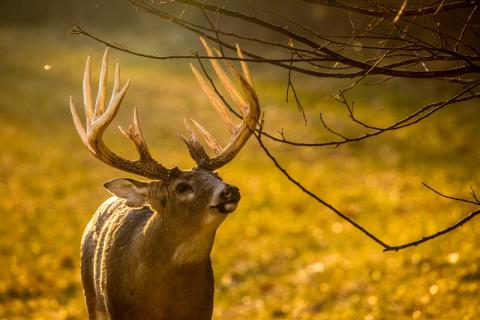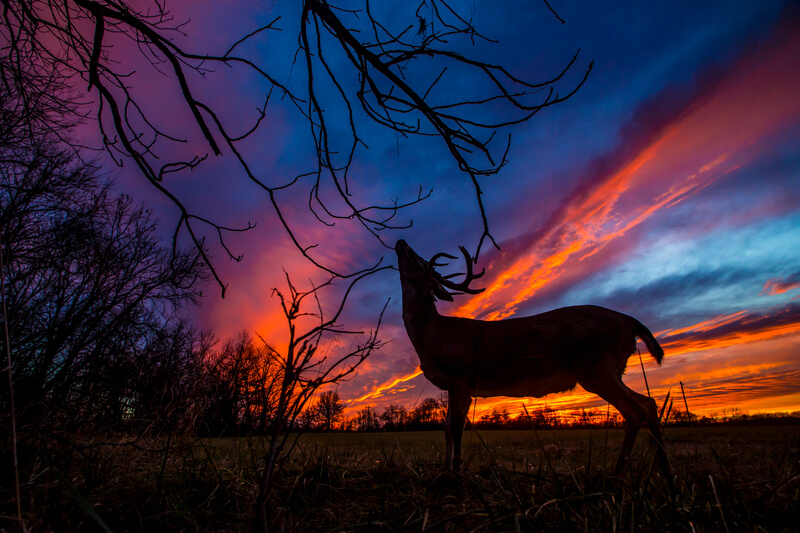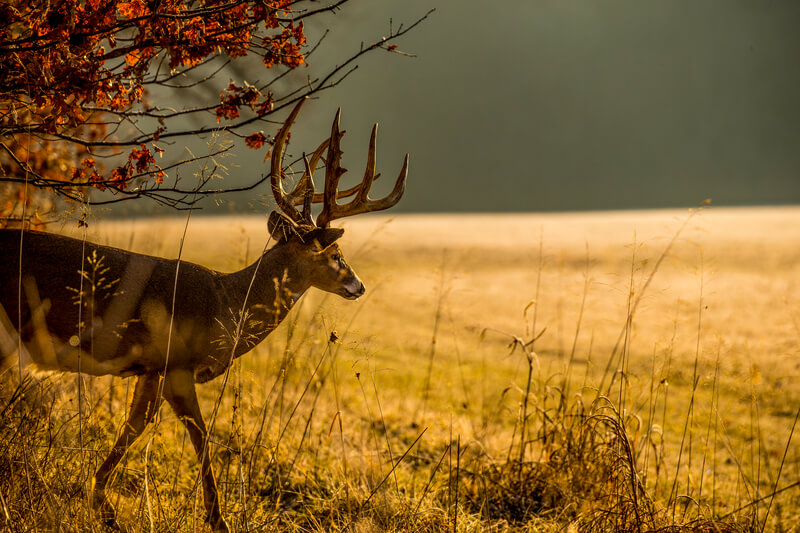
Deer hunting is an age-old tradition enjoyed by countless hunters. Whether stepping into the field for sport, for putting venison on the table, or hunting as a passion, hunting deer always puts your skills and knowledge to the test.
When is Deer Hunting Season?
Hunting season coincides with the deer rut when deer are actively mating which generally occurs in late October through November. Exact dates for deer hunting season will vary from state to state however, so be sure to check regulations for your location and state. You can find a list of state license and regulation information at Bass Pro Shops.
Best Time to Hunt Deer
Deer are most active during low-light periods, such as early morning and late evening. They will be either moving from their chosen feeding location to their bedding area or moving from their bedding area to their feeding location during these times. This activity increases your chances of spotting and encountering deer.

You also need to be sure to keep an eye on the weather as well. Deer tend to be more active when the weather is cool and overcast, or just before a weather front moves in. Deer start to seek shelter during extreme weather, such as heavy rain or strong winds, reducing their movement.
Deer Hunting Tips for Beginners
For those new to deer hunting, stepping into the woods might feel like a daunting task. However, with the right approach and mindset, it can be an incredibly rewarding experience. Here are some essential tips for beginner deer hunters:
- Practice Your Shooting: Whether you're using a bow or a rifle, practice is key. Spend time at the shooting range to become proficient with your hunting weapon. Consistent and accurate shooting will boost your confidence and increase your chances of making a clean and ethical kill.
- Learn to Be Patient: Hunting requires patience and perseverance. It's not uncommon to spend hours waiting for the right moment to present itself. Remain still, quiet, and attentive, as deer have an uncanny ability to detect movement and noise.
- Scout the Area: Before the hunting season begins, take the time to scout the hunting area. Familiarize yourself with the terrain, identify deer trails, bedding areas, and food sources. Understanding deer habits and behavior in your hunting location will increase your odds of success. Many hunters will set up a game camera to help them see if deer are using the area they plan to hunt.
- Stay Downwind: One of a deer's most powerful senses is its sense of smell. Always approach your hunting area from downwind, ensuring that your scent is not carried to the deer. Consider using scent-eliminating products to further reduce your odor.
- Stay Quiet: Deer also have excellent hearing, and any sudden noise can spook them. Move quietly and avoid making unnecessary sounds while in the field. Keep your cellphone on silent mode and avoid using loud equipment while hunting.
- Use Calls and Decoys Sparingly: Calls, such as grunt calls and rattling antlers, can be effective during the rut to attract curious bucks. However, use them sparingly and realistically. Additionally, decoys can draw in deer, but be cautious not to overuse them, as deer can become wary of decoys that look unnatural.
- Hunt the Edges: Deer often feel more secure when they have cover nearby, such as the edge of a field or a forest. These transition areas between different habitats are prime spots to encounter deer, as they offer a combination of food, water, and shelter.
- Stay Safe: Prioritize safety above all else. Always inform someone of your hunting plans and when you expect to return. Wear appropriate safety gear, such as blaze orange clothing, to ensure you're visible to other hunters.

Essential Deer Hunting Gear
If you’re new to deer hunting, it can be difficult to know what’s strictly. We’ve included a breakdown of some essential items you should consider for your hunting arsenal:
Hunting Bow or Rifle
Hunting with a bow can provide a challenging and rewarding experience. If you choose to hunt with a bow, it's essential to select the right type and draw weight for your skill level. Regular practice will help you to become proficient with your bow and develop the consistency you need on the hunt.
For rifle hunters, selecting the appropriate rifle and caliber is crucial. Choose a rifle that suits your hunting style and the terrain you'll be hunting in. Build up your marksmanship skills by shooting from different positions and distances. Consider checking with your local range to practice if you can’t practice at home.
Hunting Clothing
Wearing the right clothing is essential for blending into your surroundings and staying comfortable during your hunting trip. Choose camouflage clothing that matches the environment where you'll be hunting.
Treestands and Climbing Stands
Elevating yourself above the deer's line of sight can give you a distinct advantage while hunting. Treestands and climbing stands allow you to sit comfortably and discretely in a tree, reducing the chance of being detected by deer. Ensure you follow proper safety measures when using these stands, such as wearing a safety harness.
Binoculars
A good pair of binoculars is an essential tool for any hunter. Binoculars enable you to scan the landscape from a distance, spot deer movements, and identify potential targets. Opt for binoculars with a magnification level suitable for hunting (generally 8x or 10x) and consider models with low-light capabilities for improved performance during early mornings and late evenings.
- 11379 views

